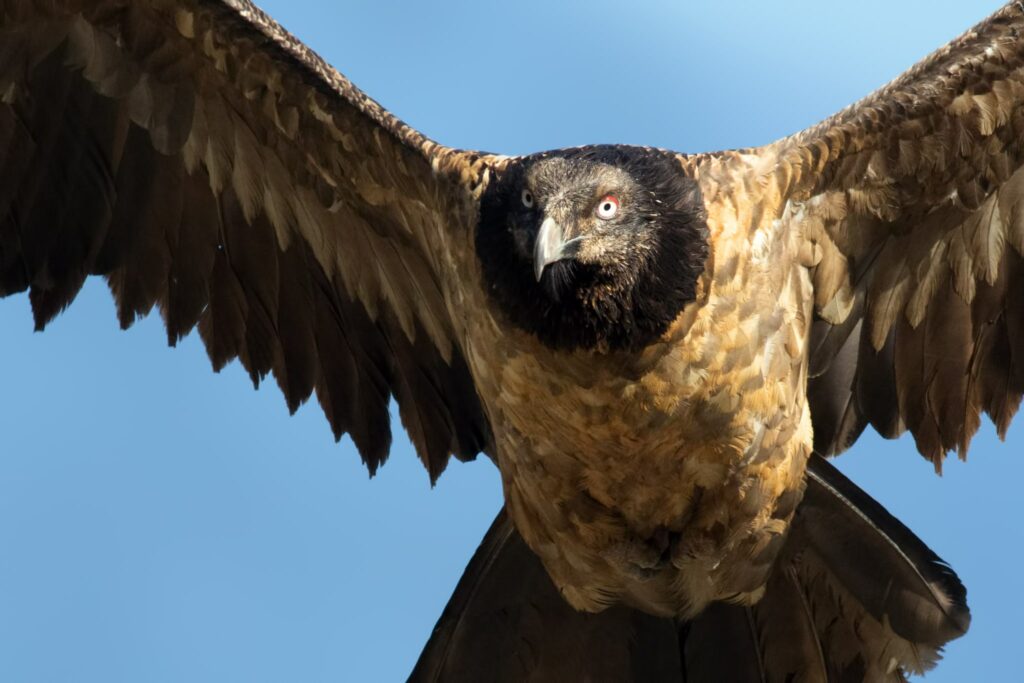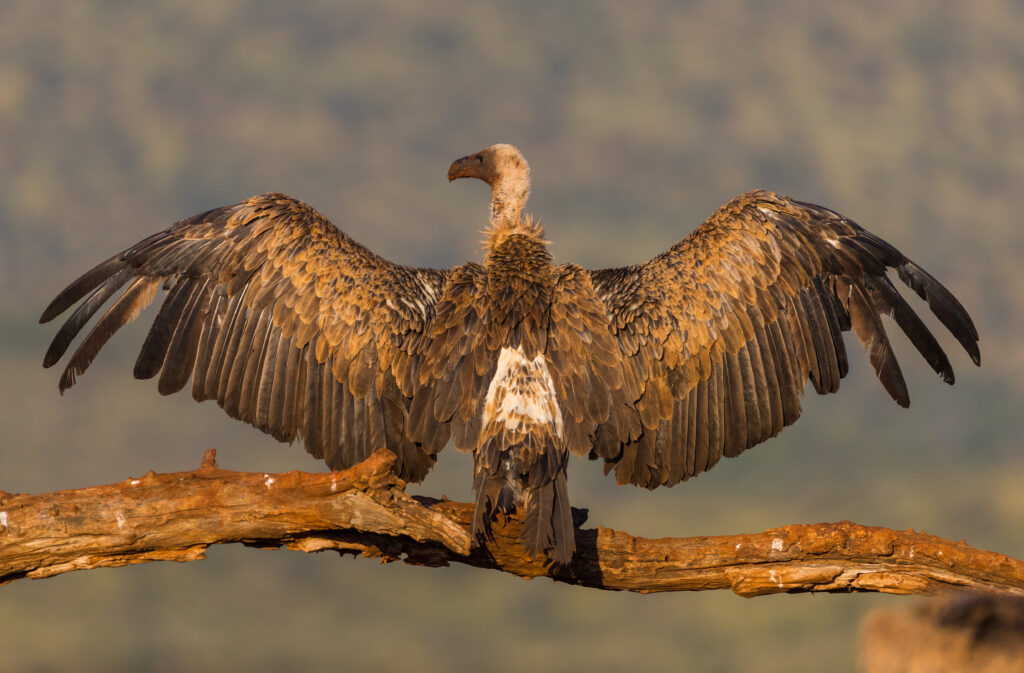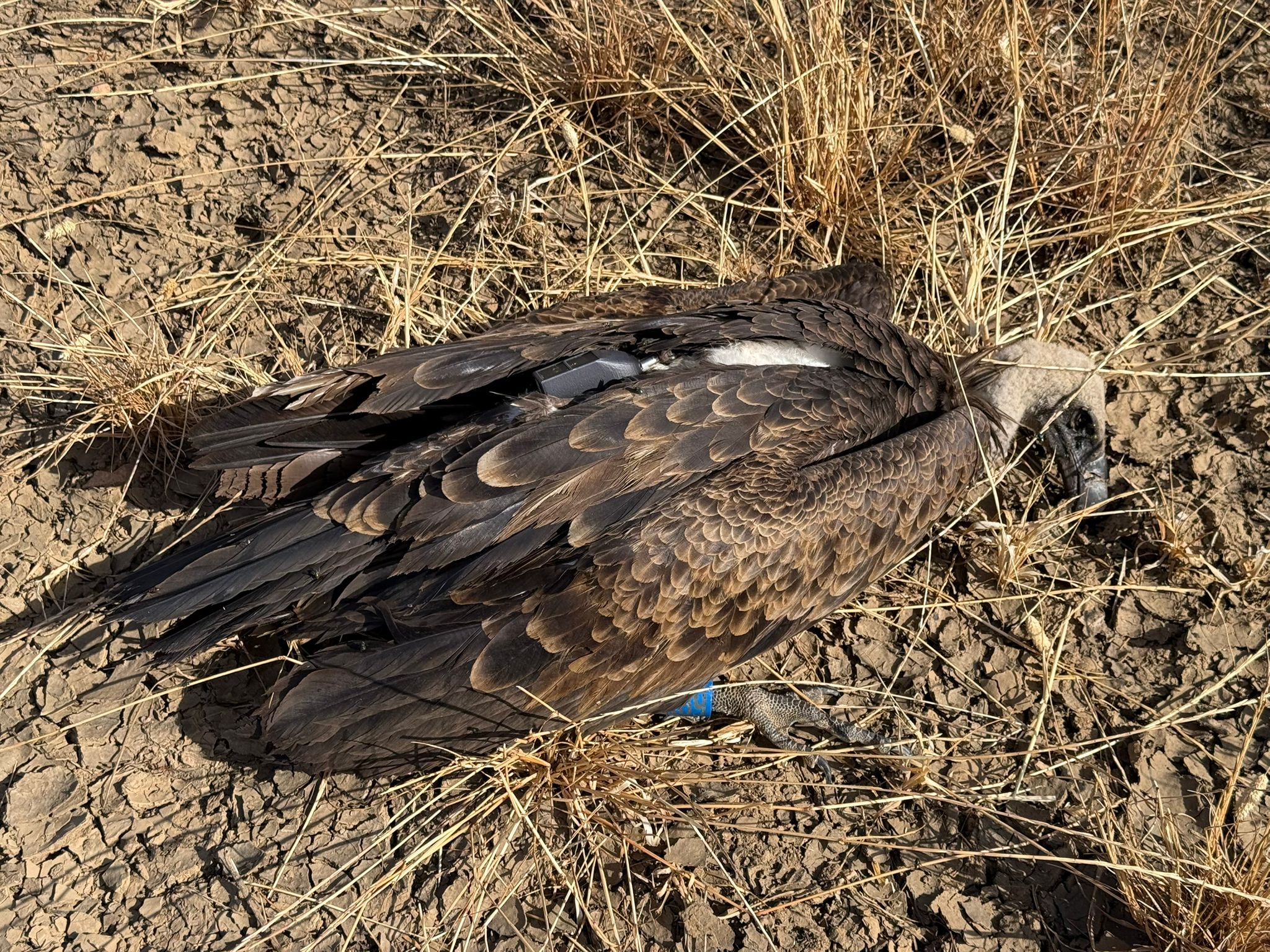The second European Vulture Conference (EVC) held in Cáceres, Spain, from November 14 to 17, 2023, marked an important moment for international collaboration and information exchange. While its roots were in Europe, its impact resonated globally, drawing experts and enthusiasts from all vulture continents, spanning Africa, Asia, and the Americas. With about 400 attendees representing 46 countries, the conference underscored the importance and commitment to securing the future of vultures worldwide. In this article, we will distil the conference’s main themes and insights, offering a clear snapshot of the current status and prospects of vulture conservation and research.
Overall takeaways

The conference boasted a packed scientific programme featuring high-quality research with 110 standard talks, 20 speed talks, four keynote speeches, two roundtables, one workshop and 61 posters. This diverse array of presentations not only highlighted overarching themes but also showcased distinct insights and perspectives.
Vulture populations increase when there is cooperation, funding and implementation of legislation (such as the ban on diclofenac, adherence to the EU birds and habitats directive, the Vulture MsAP, etc.).
Long-term investment in nature and vulture conservation yields significant benefits, particularly through the delivery of ecosystem services. It is imperative to enhance engagement with governments to ensure a lasting impact.
Consolidation is a critical aspect of successful projects. Adequate preparation for long-term funding, management, and programme commitment over 10-20 years is essential. This brings us to the next point – vulture conservation is multigenerational.
Recognizing projects as long-term efforts is crucial, as seen in the successful Bearded Vulture reintroduction project, which was initiated in the 1970s and is still ongoing. Welcoming new generations and young individuals into conservation efforts, as observed in the conference, provides optimism for the future of vulture populations.
Strengthening ties with government representatives and active participation in conventions are essential. This strategic engagement plays a vital role in advancing specific issues and ensuring successful conservation initiatives.
A positive story in Europe
Vulture conservation is a successful story in Europe. Vulture populations of Bearded, Cinereous, Egyptian and Griffon Vultures have been either increasing or stable (for the most part). Spain is a remarkable example, housing 90% of Europe’s vulture populations, offering a good model to follow. The Balkans are coming up as the next success story, demonstrating substantial dedication.
Despite positive trends, challenges persist in Europe. A presentation on Egyptian Vulture migration highlighted the need for continued efforts, as most mortalities occur in Europe, not Africa. The critically endangered Rüppell’s Vulture, Europe’s newest vulture species, demands special attention, and enthusiastic support is already building.





Continental updates: Africa, Asia, and the Americas
Africa presented some positive news, with a decline in sentinel poisoning that is responsible for killing thousands of vultures in the last 10 years. In addition, the Cape vulture status and numbers have been improving after 20-30 years of work.
In Asia, diclofenac has caused a drastic decline in vulture populations, but successful legal bans have been achieved. A regulatory ban emerges as the simplest and most effective solution. Expansion of the ban into other regions is needed, as discussions in Saudi Arabia and Israel showcase its negative impact on bird populations. Central Asia, home to large vulture populations, with species such as the Himalayan and Bearded Vulture, received limited attention at the conference, and there is a research gap that merits exploration.
New World Vulture representatives from the Americas joined, revealing similar threats like poisoning and food availability. Collaboration with North and South American colleagues is encouraged.
Conservation challenges and solutions
The most significant threat to vultures continues to be poisoning through poison bait. However, viable solutions exist. Initiatives like the Wildlife Crime Academy play a crucial role in engaging and building the capacity of law enforcement and judiciary authorities to combat this threat. Effective communication is key, alongside concrete measures to reduce human-wildlife conflicts, particularly addressing predation by wolves, jackals, or pumas in South America. In Africa, addressing belief-based mortality is a real challenge. The development of an action plan in West Africa is a good way forward.
Collision and electrocution pose serious threats, and the situation may worsen due to the global surge in renewable energy infrastructure to combat the climate crisis. Implementing regulatory frameworks becomes essential, making it compulsory to rectify existing power lines impacting birds and ensuring the construction of bird-friendly lines. Spain’s approach, where companies failing to address electrocution face fines, should serve as a model for broader adoption.
Emerging natural threats include avian flu and other diseases, and require ongoing monitoring and attention.
In a positive move, it seems that lead will be banned in Europe over the next years, with restrictions already in place for use of lead shot ammunition around wetlands. Efforts for banning big game bullet ammunition are underway, facing some challenges that necessitate continued advocacy. This ban in Europe could potentially trigger similar in regions like Africa, where big game hunting is prevalent.
The importance of food sources for vultures cannot be overstated. While supplementary feeding proves beneficial, challenges arise due to potential detrimental effects. Collaborating with livestock breeders and hunters is crucial. Vulture-livestock interactions have become a growing concern, originating in Spain and extending to France, Portugal, Switzerland, and the Balkans. Primarily a perception issue, addressing this challenge requires effective communication. Scientific analysis and data may play a vital role in resolving these concerns and ensuring a harmonious coexistence between vultures and livestock.
Saving vultures with reintroduction and restocking projects
Reintroduction and restocking efforts, ways to restore populations or prevent extinctions, were topics explored in numerous projects presented at the conference. These initiatives involve releasing captive-bred and translocated individuals, a strategy applied to four vulture species in Europe. Positive results elsewhere were also mentioned, particularly with the Asian White-rumped vulture.
However such projects should not start before ensuring the mitigation of threats in release areas to avoid releasing birds that may die shortly after release. Equally important is the establishment of robust monitoring systems to evaluate the progress of reintroduction or restocking projects.
New technologies and innovative approaches
New technologies, like drones for monitoring and automatic detection systems using artificial intelligence at wind farms to spot birds and stop turbines as needed, generated significant interest. There’s also anticipation for the future development of cameras equipped with AI to monitor nests.
Regarding communication, there’s a call to increase communication efforts and involve people in solutions. Positive communication is crucial, emphasizing the importance of choosing the right words to portray messages. Engaging governments, advocating for legislation, and promoting long-term funding and management are crucial for sustained success.
Collaborative science and data sharing are highlighted as crucial elements for successful conservation efforts. Standardizing data for the analysis of LIFE projects is stressed as important too.
GPS-GSM tracking methods were noted as essential for conservation, with a cautionary note about potential impacts, urging careful consideration.
Exploring innovative approaches, and discussions encouraged a holistic perspective beyond vultures, considering scavenger ecology and entire ecosystems. Also, insights into the microbiome of vultures underscored its crucial role in ecology and the ecosystem services they provide.
Recordings of the presentations, covering the talks of all three parallel sessions, will be made available soon.
Beyond science
To ensure a well-rounded experience, we incorporated diverse activities to encourage networking, knowledge and idea exchange and forging potential collaborations and projects.
We organized three field trips to distinct locations in Extremadura, offering attendees the opportunity to witness the region’s diverse bird species and wildlife, including numerous vultures. Given Caceres’ UNESCO heritage status, it was only fitting to offer a cultural visit with a guided tour. And of course, like last time, we organized a social dinner.
Moreover, we incorporated two surprise activities: a cultural moment featuring a vulture-themed s complete with singing and dancing, as well as a spirited football match—an activity often enjoyed at our events.
Many thanks to everyone who made the EVC possible

The European Vulture Conference 2023 was organized by the VCF as part of the LIFE Aegypius Return project, co-funded by the European Union’s LIFE Programme. We extend our heartfelt gratitude to everyone who contributed to the success of this conference.
– All participants for their engagement and enthusiasm
– VCF donors: MAVA Foundation, the European Union’s LIFE Programme, and Fondation Hans Wilsdorf
– Supporters: Junta de Extremadura for vast support, Diputación de Cáceres that provided the venue, and Extremadura Birding that organized and sponsored the field trips
– Officials who opened the conference: Francisco Javier Díaz Cieza from Provincial Deputy of the Excma. Diputación de Cáceres, Borja Heredia Armada from MITECO, Deputy Mayor Pedro Juan Muriel Tato of the City Council of Cáceres and the General Director of Sustainability Germán Puebla Ovando of the Regional Government of Extremadura
– Exhibitors: Birding in Extremadura, E-obs, Ornitela, Ecotone and Viking Optical Ltd.
– Conference volunteers and logistics agency team
– Photographer Hansruedi Weyrich
– Sketcher Mara
– Magdala – Sacred Voices for the cultural moment
– The Scientific Committee for constructing a comprehensive scientific programme
– The entire VCF team, including staff, management, and advisory board
As a tribute to those who inspire vulture conservation, the Vulture Conservation Foundation will introduce the Michel Terrasse Annual Vulture Conservation Award, with a reward of 5,000 euros. More information coming in 2024 – make sure you are subscribed to our newsletter to get notified.
EVC 2023 showcased a collective effort to address shared challenges. The insights gained and partnerships forged in Cáceres will drive vulture conservation forward.




